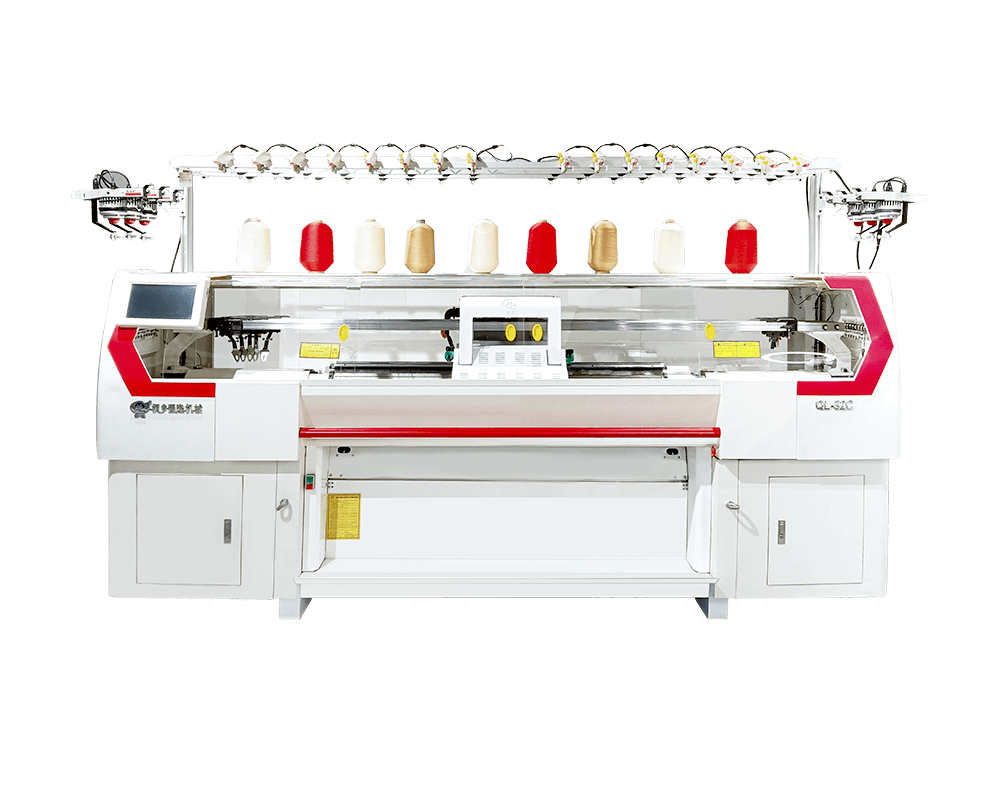Tongxiang Qianglong Machinery Co., Ltd. is high-tech China wholesale computerized flat knitting machine manufacturers, specialized in designing, developing, and manufacturing Knitting Machinery..
The energy efficiency of a motorized feeder's motor can vary widely depending on several factors, including the type of motor used, the design of the feeder, its operating conditions, and the specific application. Here are some considerations that can affect the energy efficiency of the motor:
Motor Type: Different types of motors have varying energy efficiencies. For example, modern brushless DC (BLDC) motors and permanent magnet synchronous motors (PMSMs) are generally more energy-efficient compared to traditional brushed motors or induction motors.
Motor Size and Rating: The motor's size and power rating can influence its energy consumption. An oversized motor may consume more energy than necessary for the task, while an undersized motor may strain and consume more energy to perform its function.
Load Variability: If the feeder operates under varying load conditions, an energy-efficient motor might adjust its power output based on demand, which can help conserve energy.

Speed Control: If the motorized feeder allows for variable speed control, it can optimize energy consumption by operating at lower speeds when higher speeds are not required.
Efficiency Standards: Some industries and regions have specific energy efficiency standards or regulations for motors. Motors that comply with these standards are designed to operate more efficiently and consume less energy.
Motor Control Technology: The type of motor control technology used, such as pulse-width modulation (PWM) or vector control, can impact energy efficiency by optimizing motor performance.
Startup and Shutdown: Energy-efficient motors might have features that reduce energy consumption during startup and shutdown phases.
Mechanical Design: A well-designed feeder with optimized mechanical components (e.g., belts, gears) can minimize energy losses and improve overall efficiency.
Environmental Factors: Operating conditions, such as temperature and humidity, can affect the efficiency of the motor.
Maintenance: Proper maintenance, including regular lubrication and alignment, can help maintain the motor's efficiency over time.
When evaluating the energy efficiency of a motorized feeder's motor, it's important to consider the motor's efficiency rating, which is often indicated as a percentage. Motors with higher efficiency ratings convert a greater portion of the input electrical energy into mechanical output energy, resulting in less energy wastage in the form of heat.
Energy-efficient motors not only contribute to reduced operational costs but also align with sustainability goals by minimizing energy consumption and reducing carbon footprint. When selecting a motorized feeder, you may want to inquire about the motor's efficiency rating, any energy-saving features, and whether it meets relevant energy efficiency standards or certifications.
Motor Type: Different types of motors have varying energy efficiencies. For example, modern brushless DC (BLDC) motors and permanent magnet synchronous motors (PMSMs) are generally more energy-efficient compared to traditional brushed motors or induction motors.
Motor Size and Rating: The motor's size and power rating can influence its energy consumption. An oversized motor may consume more energy than necessary for the task, while an undersized motor may strain and consume more energy to perform its function.
Load Variability: If the feeder operates under varying load conditions, an energy-efficient motor might adjust its power output based on demand, which can help conserve energy.

Speed Control: If the motorized feeder allows for variable speed control, it can optimize energy consumption by operating at lower speeds when higher speeds are not required.
Efficiency Standards: Some industries and regions have specific energy efficiency standards or regulations for motors. Motors that comply with these standards are designed to operate more efficiently and consume less energy.
Motor Control Technology: The type of motor control technology used, such as pulse-width modulation (PWM) or vector control, can impact energy efficiency by optimizing motor performance.
Startup and Shutdown: Energy-efficient motors might have features that reduce energy consumption during startup and shutdown phases.
Mechanical Design: A well-designed feeder with optimized mechanical components (e.g., belts, gears) can minimize energy losses and improve overall efficiency.
Environmental Factors: Operating conditions, such as temperature and humidity, can affect the efficiency of the motor.
Maintenance: Proper maintenance, including regular lubrication and alignment, can help maintain the motor's efficiency over time.
When evaluating the energy efficiency of a motorized feeder's motor, it's important to consider the motor's efficiency rating, which is often indicated as a percentage. Motors with higher efficiency ratings convert a greater portion of the input electrical energy into mechanical output energy, resulting in less energy wastage in the form of heat.
Energy-efficient motors not only contribute to reduced operational costs but also align with sustainability goals by minimizing energy consumption and reducing carbon footprint. When selecting a motorized feeder, you may want to inquire about the motor's efficiency rating, any energy-saving features, and whether it meets relevant energy efficiency standards or certifications.

 English
English 简体中文
简体中文
 Chinese
Chinese English
English











